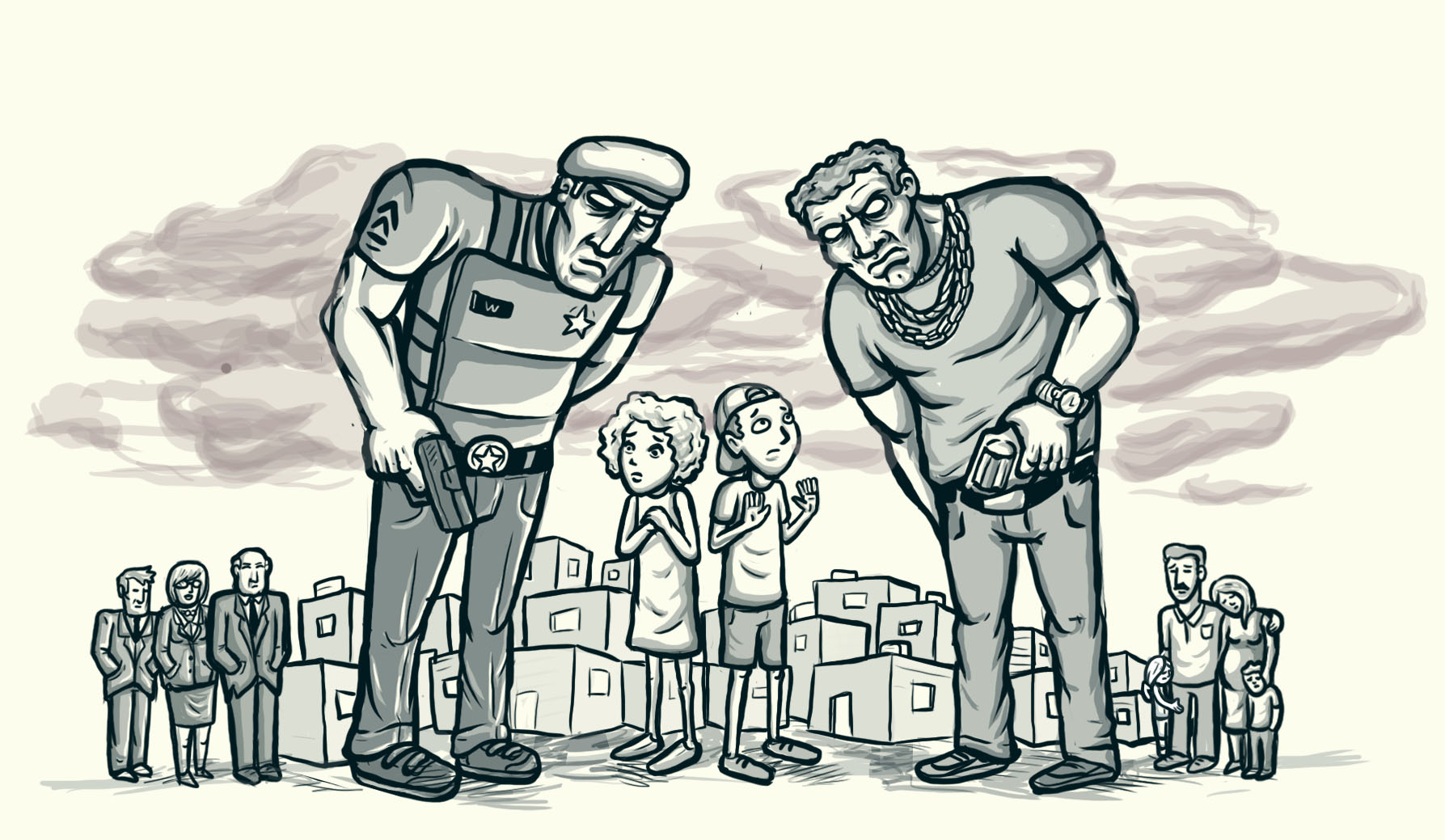Faced by the public defenders of a youth court in São Paulo, Brazil, Gorete emotionally explained what happened on the February night when four military police officers came to her home and threatened to kill her teenage son.
The police officers, who were searching for a revolver they believed Gorete’s son was hiding, did not have identification on their uniforms. They allegedly pointed a gun at her 12-year-old daughter’s head and demanded to know where the weapon was.
“We’re going to come back and when we get back, we’ll end your son here,” she says they told her.
But even though officials agreed that Gorete’s son, known only as D, was at risk of being murdered, he was not admitted to the Program for the Protection of Children and Adolescents Threatened with Death (Programa de Proteção a Crianças e Adolescentes Ameaçados de Morte – PPCAAM), set up by Brazil’s federal government in 2007.

Indeed, the program in São Paulo state has not accepted new cases since January because of a lack of funds, meaning 34 threatened children have no protection.
In an internal report, the São Paulo Public Defenders Office concluded that “the protection, which should also be guaranteed, is under threat. These are lives that have twice been unprotected, neglected and silenced.”
“We receive cases of death threats almost every day,” said public defender Claudia Abramo. “These are urgent cases, and PPCAAM is our only effective means of dealing with these threats.”
Many of the youths are black, marginalized and have already spent time in juvenile detention, leaving them vulnerable to abuse by police officers.
After the police visited his mother, D now sleeps at the homes of friends.
“I am scared. When I see a car, I look to see if it’s them. I stay at my friends’ houses, playing video games. I sleep there. I only go home occasionally to talk to my mother and grandmother, to tell them I’m okay,” he told the public defenders.
In another case, 16-year-old R said he had already been beaten twice by police. He, too, fled his home and only returned for the burial of his childhood friend, who was a year younger than him and was killed by police.
“I do not want, God forbid, to bury my son,” his father told the public defenders. “I want my son to bury me.”
L, who was recently released from juvenile detention, is under threat from drug gangs near where he lives. His mother does not know what to do and, according to public defenders, the boy “cries out for someone to help him.”
The PPCAAM covers 14 states and São Paulo is the only one not taking new cases. A document obtained by Agência Pública from the Justice and Citizenship Defense Secretariat (Secretaria da Justiça e da Defesa da Cidadania – SJDC), blames a lack of resources and staff.
“Part of the problem is the lack of foresight by the federal government of the sum to be sent to the program,” which has generated “insecurity in the current team in the face of the demands placed on them,” the report said.
While 34 new cases since January have not been accepted, the SJDC confirmed it was continuing to support the 80 children already in the program. The federal government confirmed there had been a delay in payments to the states but said that all, including to São Paulo, were now up to date.
Ariel de Castro Alves, a specialist in youth law, said the situation was “unacceptable.” The high rates of murders of children and adolescents make it clear that the program, even if it does not solve all cases, helps to prevent further deaths, he said.
“Often, the only possibility for protection is the program itself,” he added.
According to a 2016 report on violence against youths in Brazil prepared by the Latin American Faculty of Social Sciences (Facultad Latinoamericana de Ciencias Sociales – FLASCO), more than 10,500 murder victims in Brazil were 19 years old or younger in 2013. The rate of 16.3 murders for every 100,000 children placed Brazil third out of 85 countries.
Of the cases referred to public defenders in São Paulo, 48 percent relate to threats from police and 36 percent to threats from organized crime. Nationally, many of those threatened are black adolescents aged 15 to 17.
PPCAAM protects not only children but whole families. Until September 2016, it had accepted almost 10,000 people since its inception: 3,512 children and 5,988 families. Last year alone, the program protected 431 children and 750 families.
On average, children remain in the program for six months to a year, but sometimes longer. It has been activated in several infamous cases in Brazil, such as the 16-year-old victim of a gang rape by up to 30 men in a Rio de Janeiro favela






 PayPal
PayPal 


















